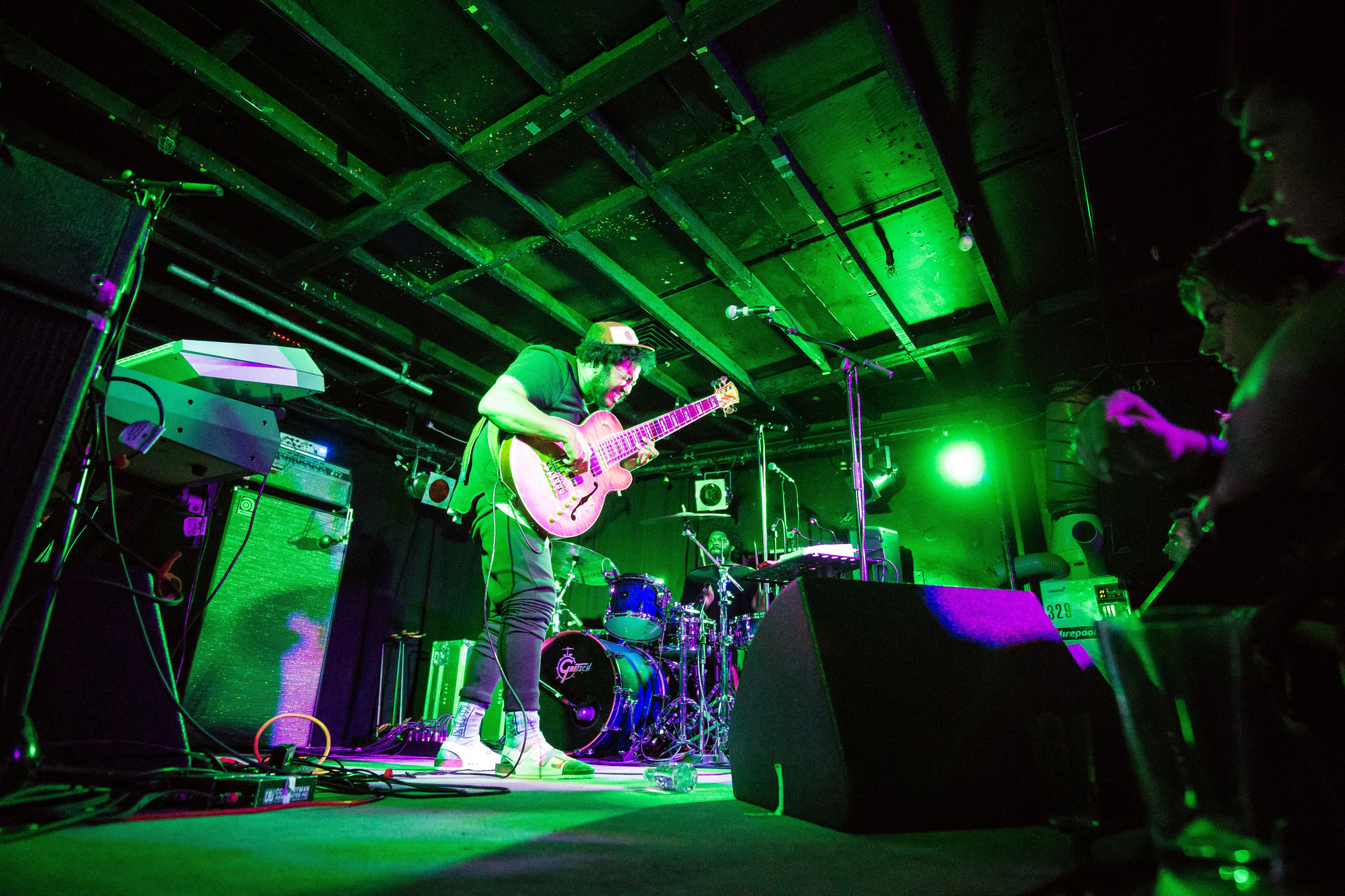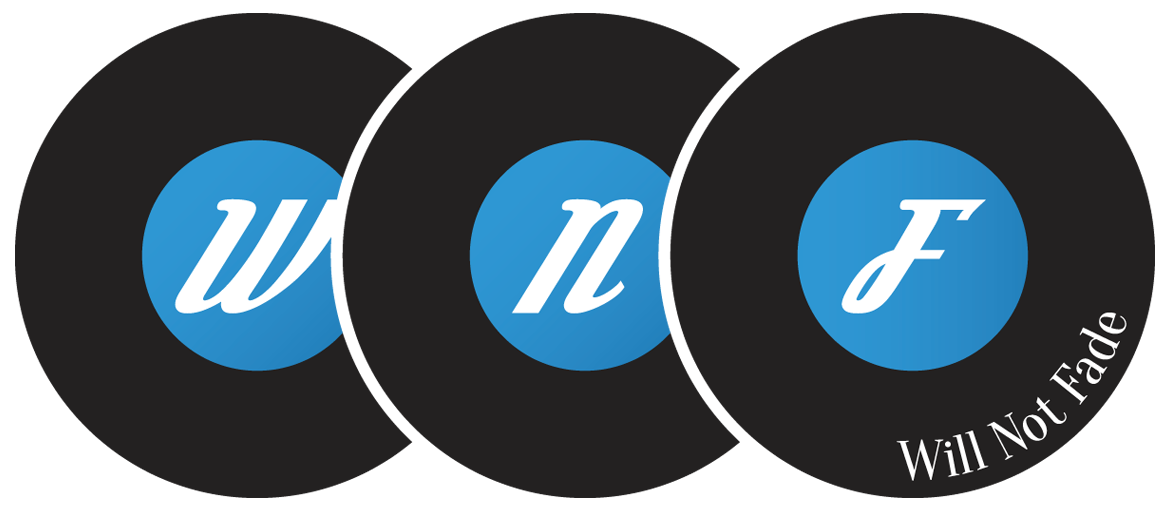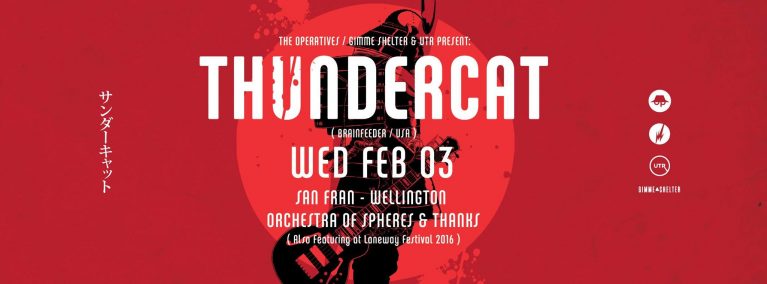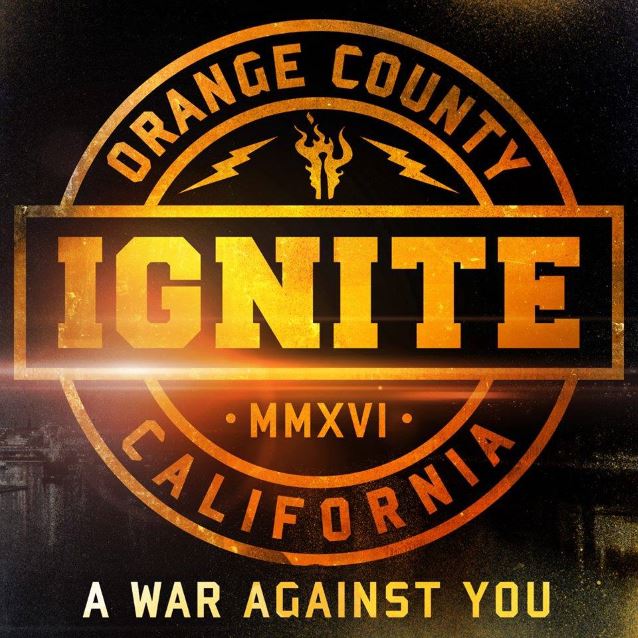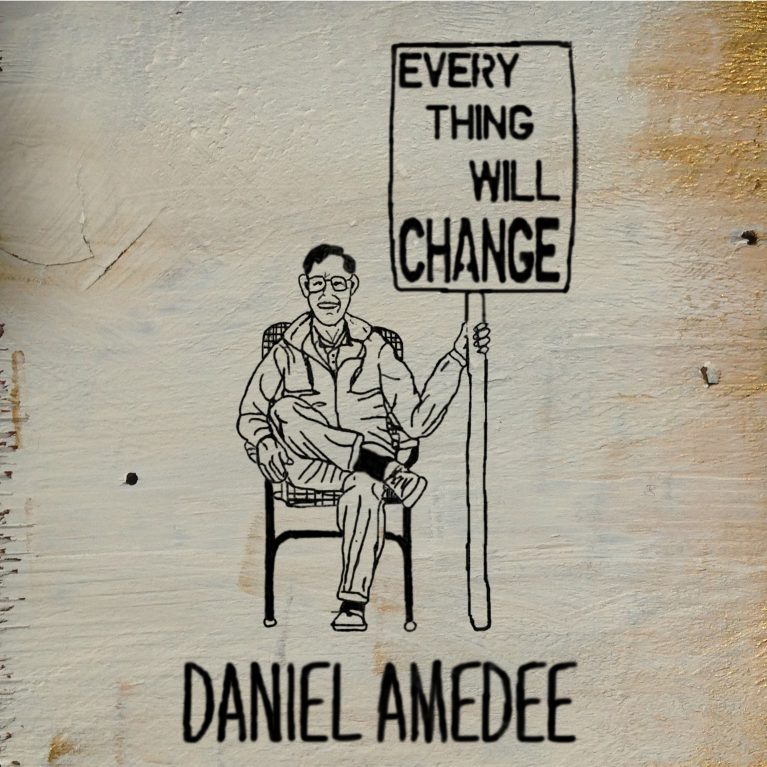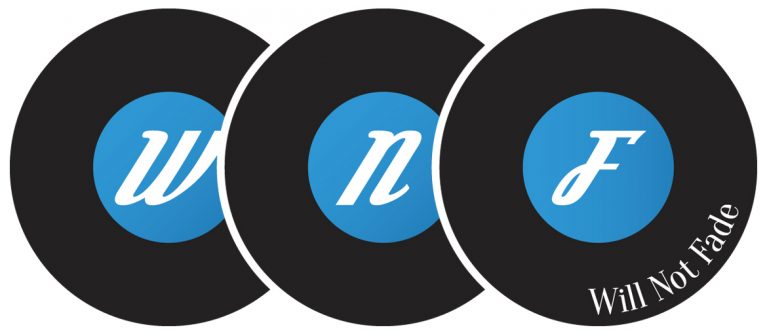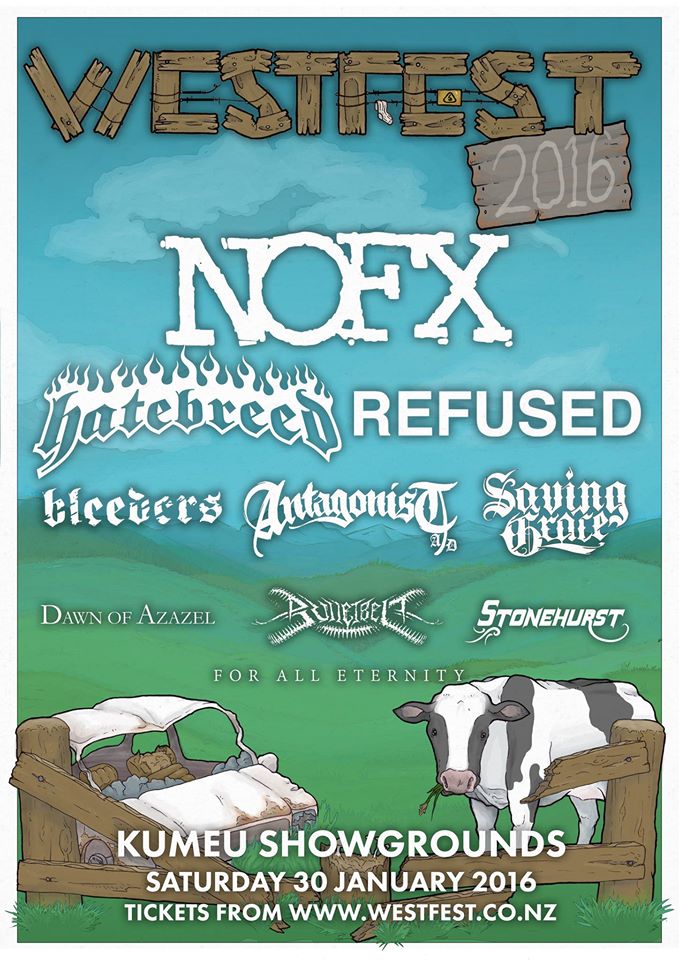What a year it has been! We’ve been blessed to have so many amazing bands to come to our shores this year, and we are just as lucky to have strong local talent that we can depend on seeing throughout the year as well. I’ve summarised below some of the highlights and letdowns of my year, concluding with a discussion of the live music scene.
The best shows of 2015
Jurassic 5 blew me away with their incredibly fun and interactive show. Great music, great showmanship.
Frank Turner has been one of my favourite artists for years now. There’s no way that I could see him play his rousing music and it not be a highlight of my year. It was a cool bonus to meet him and have a chat outside the venue after the show as well. His new album, released a few months later, was also excellent.

This Will Destroy You. Image: Fergus Cunningham
I actually thought that Australian post-rockers sleepmakeswaves put on a far better set than the more established headliners This Will Destroy You. There was so much energy and joy on stage. Many post-rock acts just let their music do the talking, but sleepmakeswaves put on a show as well as playing great music.
Most insane show award would go to either powermetal lords Dragonforce or mathcore act Dillinger Escape Plan. Although both could be classed as metal bands, they are at different (extreme) ends of the spectrum. Both played at a packed out Valhalla, and both bands featured musicians who were ridiculously proficient at their instruments.
I finally got to see what I consider an original hardcore/punk band this year. I’ve seen OFF!, Misfits and Corrosion of Conformity in the past, but they may as well be covers band,featuring more ring-ins than original members. A group of us hired a van and drove up to Auckland to see Gorilla Biscuits play at The Kings Arms. I think it is as close as I’ll ever get to seeing one of those pioneering punk/hardcore groups live, and it was great. Such a fun and positive band.
It is always a pleasure seeing perennial local heroes Jakob and Beastwars (the two bands toured as a double bill), and I managed to see my favourites Shihad play three times this year (at Homegrown and AC/DC).

The set that Shihad played both nights of Homegrown. They also played the song “Pacifier” for the encore on Sunday.
My last highlight was Declaration AD, although I say this with a hint of sadness. They released their final album (Sometimes It’s Us) earlier on in the year, along with the announcement that their time as a band was coming to an end. The lineup for their final show at Zeal included some of the best current punk/hardcore/metal acts in New Zealand. Declaration played a mammoth 16 songs and finished on a high. They made a big impact, not only in Wellington, but also in the wider New Zealand hardcore scene.
Disappointments
Every show I attended in Auckland this year left me feeling disappointed.
It started off with Foo Fighters cancelling their intimate Town Hall show because a truck with their gear had en route, leaving them without the equipment they needed. My friends and I took the opportunity to see American rapper Freddie Gibbs instead. Gibbs was brilliant, but making fans wait for hours just to see a short 40 minute set was disrespectful to those who paid good money to see him perform.
The following night wasn’t much better. The Foo Fighters weren’t bad, but it was nothing compared to their previous few NZ concerts. They had stopped trying, choosing instead to rest on their laurels. They included a handful of covers throughout the set that dragged, and I was bored and ready to go home well before they had finished. I was glad to see that Rise Against were on form though. I didn’t think much of their latest album, and their opening set wasn’t very long, but it was actually one of the better sets I’ve seen them play.
A month later I was up in Auckland again for Westfest. I was most excited to see grunge icons Soundgarden. They started off with my favourite song of theirs, “Spoonman”, and it sounded terrible. Frontman Chris Cornell’s voice sounded strained and the band couldn’t keep energy up. I ended up leaving halfway through their set, because a free ride back to where we were staying was more attractive than seeing one of my favourite bands struggling onstage. Thankfully my other drawcard, Faith No More, were great, and metal pioneers Judas Priest put on an outstanding show earlier in the day, making Westfest worth attending overall. Cornell came back to New Zealand at the end of the year and all the reviews I read were glowing, but I couldn’t bring myself to buy a ticket to attend after he had put on such a dismal display at Westfest.

Faith No More playing at Westfest in Auckland. Photo taken from Faith No More’s Facebook page
Wellington venues
Venue Shed 6 has been refurbished as an alternative to the infamous TSB Arena that it sits beside. I saw both Gary Clark Jr and Jurassic 5 both play there, and had no complaints either time. It’s a versatile space and I hope that it gets utilised more in the future.
I attended two concerts at the Westpac Arena this year, and I would hesitate to attend another there. I have no issue with Elton John’s show, but his fans were totally ripped off, being charged extortionate fees for limited visibility. Likewise, AC/DC put on a brilliant show, but when 40 minute delays left fans exposed in the cold wind and rain I doubt many present were happy about the choice of venue. Sound and visibility issues coupled with overpriced tickets and cramped seating do little to suggest value for money.
Robbie Williams played a successful show at the Basin Reserve in October, indicating that the Basin could be a better alternative as Wellington’s primary outdoor venue.

Mogwai at James Cabaret. Image: Bradley Garner Photography.
At one time Wellington’s best live venue, James Cabaret really let things slip. Lack of adequate air conditioning and no passouts made it hard to cope with the hot overcrowded conditions, especially when shows ran later than advertised. It was a real let down during Nas and Run The Jewels. And I don’t know if it was the venue’s fault, but there were complaints made about the excessive noise levels at Mogwai. After a handful of bad experiences I was seriously considering if I ever wanted to attend the venue again. And then without warning, the venue closed. Gorillaz Sound System had been booked to play James Cabaret, but got switched to Bodega last-minute. That was the last I ever heard of the venue.
We still have the trusty old bars Bodega and San Fran, who tend to get most bands. Meow has also been hosting more big bands this year. I’m embarrassed to admit that I still haven’t been to the new venue MOON in Newtown yet. I hope that the Town Hall will get revived one day, but from what I hear about the costs of earthquake restrengthening, it is too costly to be considered viable.
The festival scene
The established staples in the festival scene seem to be surviving. Homegrown promises to be exactly the same as it has always been. It’s almost the musical equivalent to the 7’s rugby tournament. Hipsterfest Laneway is potentially expanding next year. Raggamuffin promises to be a hit, with Wu Tang Clan announced as headliners.
Trusty old Big Day Out has experienced a rocky past few years, and has since been re-branded as Auckland City Limits, with affiliations to the similarly named Austin festival. It will be interesting to see how well ACL fares. Headliner Kendrick Lamar will be a major drawcard, and it is held later in the year, so won’t be competing against other festivals and events to the same degree.
It’s a risky time for promoters at the moment. Soulfest was cancelled last-minute due to poor ticket sales. New festival Mclaren Falls had to change venues due to complaints from locals. After the change of location they renamed as Echofest. And Echofest also cancelled and announced liquidation, leaving ticket holders potentially unable to get refunds.

The future of Westfest 16 is up in the air. NOFX have confirmed that they will not be coming.
Somewhat related, Australian festival Soundwave has ended. Promoter AJ Maddah has a history of dodgy dealings, and it sounds like the responsibility for the festival can be shared between Maddah and ticketing agency Eventopia. Fans are understandably upset, especially because neither party are willing to refund ticket holders. This has wider implications for live music in Austalasia, because it has undermined concertgoers faith in promoters and ticketing outlets. There is no way that Soundwave’s cancellation is a good thing, although some people are trying to crowdfund a Soundwave replacement called Legion.
It also places the future of Auckland heavy music festival Westfest in question. Westfest has ridden on the coattails of Soundwave for a few years now, offering very similar lineups. Westfest 14 and 15 both ran at a loss, and Westfest 16 had a noticably smaller lineup, reflecting and foreshadowing Soundwave’s issues. With many bands no longer travelling to Australia for Soundwave, it remains uncertain if they will travel further to New Zealand. However, despite being unprofitable, Westfest has done wonders to boost ODR Productions’ profile, and I have faith that whether they retain their festival or not, ODR will continue to organise most of the best shows for heavy music fans in New Zealand.
2016
2016 still looks bright. Wellington is offering their bi-annual Arts Festival, with acts like Sufjan Stevens and Death Cab For Cutie attending. I’m sure that we will have plenty of sideshows from Laneway and Byron Bays Bluesfest to look forward to as well.

David Dallas is playing at Victoria University O Week, and although I expect that will be awesome, I’m apprehensive about going to a gig that will likely feature a crowd of 17-year-old drunk first year students (probably dressed in togas as well). I’m also looking forward to seeing Iron Maiden play in Christchurch in April, and comedy/percussion show Blue Man Group in June.
What were the best shows you attended in 2015? And which ones are you looking forward to attending next year?
Joseph James

